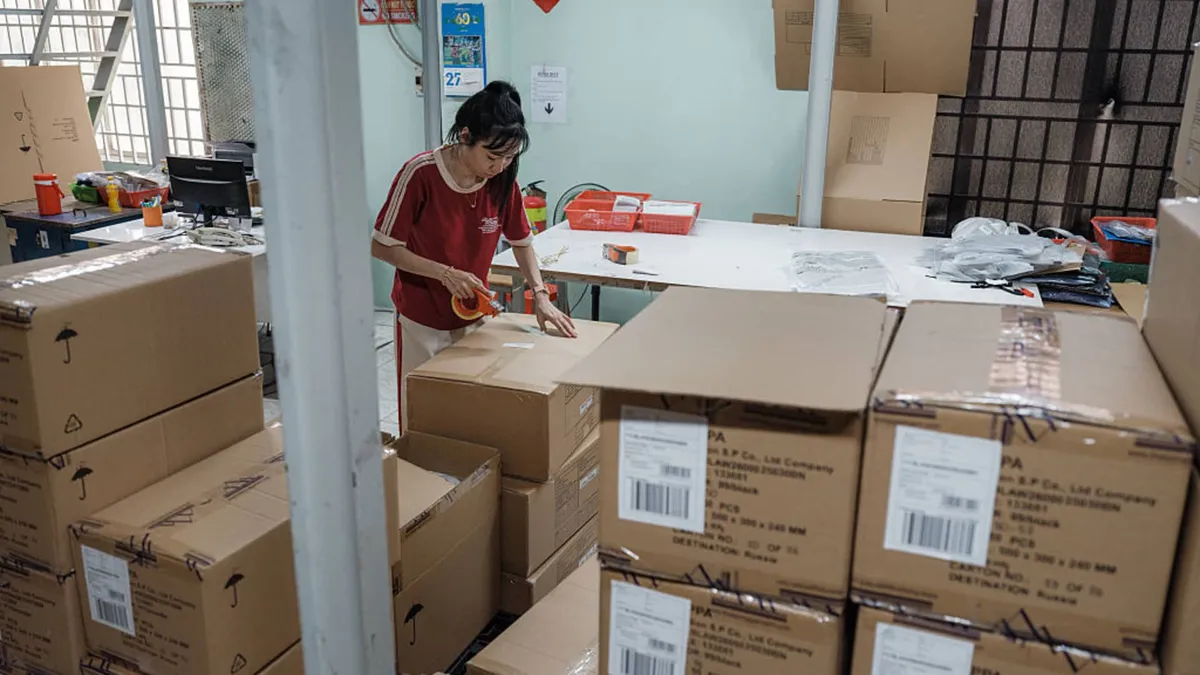
The retail industry is experiencing a mix of relief and concern following the recent announcement regarding Vietnam tariffs. While it appears that the worst-case scenario has been averted, some business executives believe that the tentative trade deal revealed by President Donald Trump could still be detrimental to business and consumer spending.
On Wednesday, President Trump announced a new tariff rate of 20% on Vietnamese imports, a significant reduction from the initially proposed 46% tariff announced on April 2, which was later suspended. According to a CEO of a prominent consumer brand, this change is a welcome improvement compared to the situation on Liberation Day. The new rate, however, is still double the current 10% duty that retailers have been facing.
Another executive acknowledged that while a 20% tariff is unfavorable, it is an improvement over the initially suggested 46% duty. "I guess Trump needs 'positive' news," he remarked, emphasizing a cautious optimism about the future of trade relations. The timing of Trump's announcement is crucial, as it comes just days before the expiration of a 90-day suspension of the previously proposed tariffs.
Despite the apparent easing of tariff rates, retail executives in the apparel and footwear sectors expressed anxiety over the potential impact. Many had feared that Vietnamese imports might soon face tariffs comparable to the cumulative 55% duties that Chinese imports endure. Over the last decade, many leading American retailers, including Gap, American Eagle, and Nike, have reduced their dependence on China to mitigate the effects of high tariffs and geopolitical unrest.
To navigate these challenges, companies have increasingly turned to Vietnam, where production quality and costs are competitive with those in China. Additionally, many have diversified their manufacturing bases to other Southeast Asian countries like Cambodia, Bangladesh, and Malaysia, which currently face lower tariffs of 10% compared to Trump's earlier proposals of 49%, 37%, and 24%, respectively.
According to the American Apparel & Footwear Association, Vietnam has now become the second-largest supplier of footwear, apparel, and accessories in the U.S. market. Projections indicate that Vietnam is on track to become the largest supplier of shoes to the U.S. by 2025, as noted by the Footwear Distributors and Retailers of America.
If Trump's proposed 46% tariff had gone into effect, the progress made by many companies to shift away from China would have been undermined. The announcement of a 20% tariff is seen by some as a relief, and it may pave the way for similar agreements with Cambodia, Malaysia, and Bangladesh.
Sonia Lapinsky, a partner and managing director at AlixPartners, expressed cautious optimism about the new tariff rate. "Twenty percent is a sigh of relief," she stated, highlighting that while the situation is not ideal, it is manageable. Many companies have strategies in place to mitigate the impact of tariffs, such as collaborating with suppliers to share costs. However, to maintain their profit margins, brands including Nike are considering price increases.
The uncertainty surrounding how these price hikes will influence consumer spending remains a concern. AlixPartners had previously developed pricing models that analyzed the potential cost increases for Vietnamese-made products under Trump's proposed tariffs. For instance, a $95 pair of men's shoes could see a price increase of $7.42 under a 10% duty, with even larger hikes expected under a 20% tariff.
Many industry leaders worry that any increase in tariffs will negatively impact both businesses and consumers. Paul Cosaro, CEO of Picnic Time, a supplier for major retailers like Target and Kohl's, noted that if the tariff had been set at 20% back in April, the reaction would not have been positive. "It's just more money coming out of consumers' pockets," Cosaro explained, emphasizing that this could lead to reduced spending on items like picnic baskets and coolers. Earlier this year, he had to raise prices by 11% to 14% to counteract the costs associated with tariffs on Chinese imports.
In conclusion, while the tentative trade deal regarding Vietnam tariffs may offer some respite, the retail sector remains apprehensive about the long-term implications for pricing and consumer behavior. Executives are keeping a close watch on the evolving situation as they navigate the complexities of international trade.